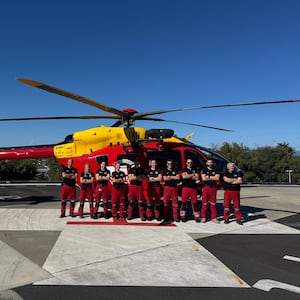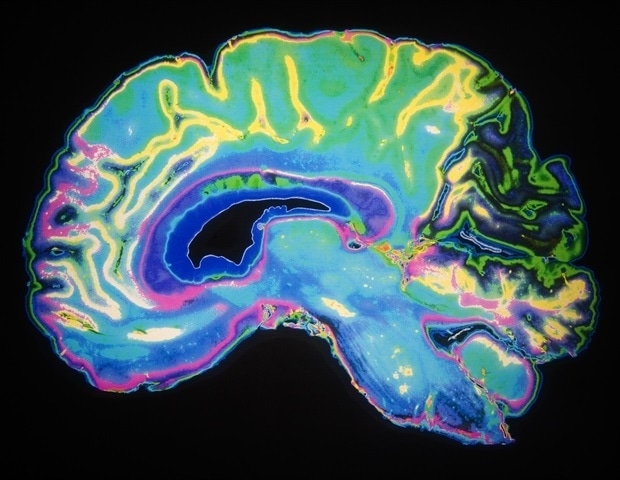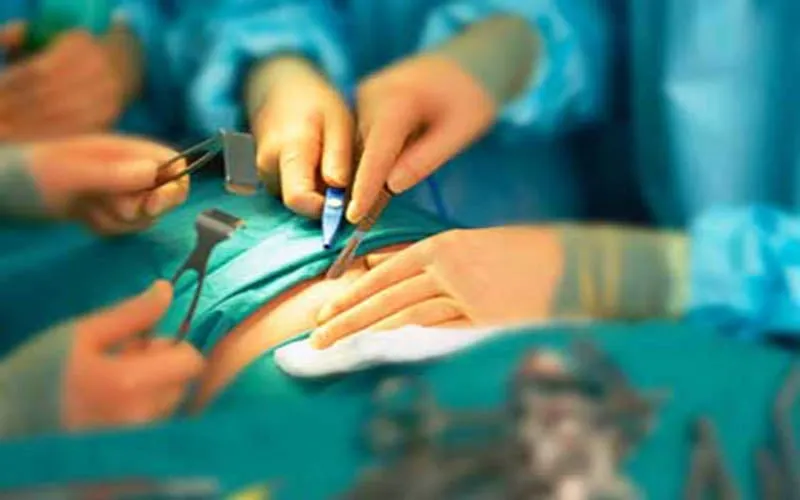
TODAY The Argus turns 145 years old. The newspaper began life on March 30, 1880. Since the paper's inception, it has covered major historic events across the county, country and internationally.
From both World Wars, devastating storms, fires and the change of the national political landscape - The Argus has been, and continues to be, a true and accurate source of information. Your very important source of trusted news. Journalism is the first draft of history and The Argus archive remains the best place to look back at how life has changed in these last 145 years in Sussex.

In more recent decades The Argus has reported on major events including the creation of the I360, the Royal Albion hotel fire, the Babes in the Wood murder trial and The Grand hotel bomb in 1984, just to name a few. Here we take a look at some historical events in detail that the Argus covered in the last 145 years. This includes: The First and Second World War, Winston Churchill visiting Brighton, Royal visits to the county, the Duke and Duchess of Sussex visiting and ABBA's historic Eurovision win in Brighton.
First World War When the people of Sussex opened their Evening Argus on August 4,1914, they were met with four devastating words: The Declaration of War. The top lines told of a late-night meeting at Number 10 with the Germans having refused to stand down over Belgium. King George V sent something of a rallying call to the forces and, in particular, the British Fleet.
Published in the Evening Argus, it read: “At this grave moment in our national history I send to you the assurance of my confidence that under your direction we will revive and renew the old glories of the Royal Navy and prove once again the sure shield of Britain and of her Empire in the hour of trial.” A copy of The Argus from November 11 1918 (Image: The Argus) In total 7,302 men from the Royal Sussex Regiment made the ultimate sacrifice, with many more Sussex men serving in other battalions also falling in battle. By the end of August, the Evening Argus joined crowds of onlookers as 300 shattered, filthy men, wounded at Mons, arrived in Brighton for treatment at the Eastern General Hospital in Dyke Road.
A report in the Evening Argus read: “There were tears in women’s eyes as one soldier was lifted on a stretcher from a van. He was quite young, with fair curly hair and blue eyes, almost like a girl’s. His leg had been shot away.
“He smiled cheerfully and feebly waved his hand to the crowd. “‘He’s only a boy’, gasped a woman. ‘God bless you, my lad, ‘murmured an old man.
” In a bid to bring some cheer to those who had fought, Charles Neville, a local entrepreneur, bought 600 acres of land between Brighton and Newhaven in 1915. Turned into housing and renamed Peacehaven, it was given as a reward for soldiers who fought in the war. The Second World War In September 1939, Britain declared war on Germany once again, plunging the country into six years of death and destruction.
One change Argus readers would have noticed soon after the start of the Second World War was the paper becoming smaller. Newsprint was rationed because it was brought into the country by boat. Reports would include sightings of German bombers, reports of artillery action on the French coast and snippets about soldiers taking special leave or being commended.
Black-out times were listed so everyone knew when to turn out the lights to hinder German bombing raids. A copy of the Argus from DDAY in 1944 (Image: The Argus) With the fall of France in 1940, the south coast of England became the first and last line of defence. In Brighton the middle parts of both piers were taken away so any invading German troops could not use them as temporary docks.
On September 14, 1940, a bomb fell on the old Odeon cinema in Kemp Town, Brighton, killing 53 people, many of them children. The Evening Argus reported that two brothers from Whitehawk, aged nine and 12, were in the cinema and for nearly five hours their distraught parents thought they were dead. Later that evening they walked through the door, telling their mum and dad: “We went to the Odeon, but it was bombed, so we came out and went to another.
” In 1942, 25 German planes attacked Brighton at noon, dropping bombs and machine-gunning people in the streets, that day 24 were killed including two boys and two policemen. The greatest civilian tragedy of the war happened on July 9, 1943, in East Grinstead. The Whitehall cinema was packed with people, many of them children, when a string of German bombs devastated the venue and other businesses in London Road and High Street.
More than 100 people were killed and 235 injured. In total more than 20,000 homes were destroyed across Brighton, Hove, Rottingdean, Saltdean and Shoreham and, by the end of the war, 227 civilians had been killed and 510 seriously injured. From the early hours of June 6, 1944, details began to trickle through, and, by breakfast, the country knew D-Day had truly begun.
“D Day: Invasion Has Begun” was the headline plastered across the Evening Argus. Eleven months later, almost to the day, the front-page of The Argus carried another historic headline: “End of The War In Europe.” Churchill visits Sussex The end of the Second World War did not mean a sudden move towards a better quality of life.
Spirits were raised, though, in November 1947 when Winston Churchill, a pillar of British resolve during the recent conflict, visited Brighton. The politician, who was between stints as Prime Minister, was mobbed by adoring supporters who had weathered the war and come through the other side. On Wednesday, November 1, 1947, The Argus reported that the city was besieged by crowds when Churchill visited: “Crowds poured into Brighton today to see Winston Churchill, who is to receive the Freedom of the Borough.
” The Argus reporting on Winston Churchill visiting Brighton (Image: The Argus) A plaque sits on the wall of the YMCA on the junction of Brunswick Road and Lansdowne Road in Hove, which used to be a preparatory school where he was educated between 1883-85. Churchill’s links to Sussex do not end there, Brighton-born Patrick Kinna was his private secretary in the Second World War. A cigar belonging to Churchill was found in a cupboard in 2014 and sold for at least £1,500 at auction.
It was inscribed to Philip Parnell, who lived in East Sussex. In 1950, Mr Parnell was called to Chartwell, Churchill’s main home in Westerham, Kent, to help with carpentry jobs. Churchill was impressed with Mr Parnell’s work and requested his attendance regularly – and he was even mentioned in Churchill’s biography.
In the mid-1950s, Churchill gave him the cigar and a signed photograph. When Mr Parnell died they were given to his daughter. And, after rediscovering them in a cupboard, she decided to auction them in Battle alongside a photograph, cigar box and signed book.
Royal visits The royal family has graced Sussex on many occasions over the decades and The Argus has been on the forefront of reporting their visits. The late Queen Elizabeth II was a welcome visitor to the county many times since she was a child, with one of her earliest visits being in 1929 when Elizabeth, nearly three years old, visited Bognor to see her grandfather King George V who was recovering from an illness. He later conferred the royal suffix to Bognor – Bognor Regis in thanks.
In 1931, a young Elizabeth attended the wedding of Lady May Cambridge in Balcombe. As a nine-year-old in March 1936 she spent a month's holiday at Compton Place in Eastbourne with her family. War brought the young princess back to Sussex.
Just a month before D-Day, the 22-year-old made a secret visit to Hove in May 1944 to inspect two battalions of the Grenadier Guards in her capacity as Colonel-in-Chief. During the final months of the Second World War the following year, she returned to inspect members of the ATS (Auxiliary Territorial Service) at the Royal Pavilion in Brighton. 1979: Queen opening Brighton Marina (Image: The Argus) In 1950 Elizabeth became godmother to the son of Major Roger Hall and his wife, of Glebe House, West Grinstead, at a christening at St George's parish church in the village.
Three months later, Her Majesty returned to the county to open the Manor Royal Industrial Estate in Crawley, part of the newly-designated New Town. One of her most popular visits was a two-day tour of Sussex in May 1951 during the Festival of Britain, when she “conquered Hastings”. in 1962, she came to Sussex to open the George Street Renovation Programme in Hove.
Controversially, a group of “defiant mums” from Portslade were so determined their children would get to see the Queen they took their children out of school for half a day. “It's very hard on parents,” one headmistress was quoted as saying. “Their loyalty to the school is being challenged by their loyalty to the Queen.
I suppose their loyalty to the Queen has won.” It was reported that the Queen and the Duke of Edinburgh “went out of their way to meet the people” during the visit, with several thousand people breaking through a police cordon at Hove town hall to welcome them in their glass-topped royal car. 1962: Queen and Prince Philip visit Brighton College (Image: The Argus) She also visited Brighton College that same year and in 1964 she opened a library at the University of Sussex.
Four years later in 1971 the Queen made history by being the first monarch to ever visit Haywards Heath to visit the International HQ of the Royal Commonwealth Society For The Blind, now Sightsavers. One of her last visits to the county came in 2007 when Her Majesty and Prince Philip arrived in Brighton by train and began a tour, including stop offs at the Theatre Royal, the Jubilee Library, The Dome and the Racecourse. Queen in Whitehawk in 2007 (Image: The Argus) They also visited Whitehawk's Roundabout Children's Centre where she met hundreds of residents.
Queen Elizabeth II died on the afternoon of September 8, 2022, at Balmoral Castle, one of her favourite places and a home she once described as being ‘such a wonderful place’; she was 96. Duke and Duchess of Sussex Thousands of people were eager to catch a glimpse of Harry and Meghan, Duke and Duchess of Sussex, when they lined the streets of Brighton ahead of the royal visit in 2018. The couple, who got married in May that year, visited some of Sussex's best known sites on a whistle-stop tour around the county.
The tour took the newlyweds to Chichester, Bognor, Brighton and Peacehaven. The Duke and Duchess of Sussex in Brighton (Image: The Argus) During their visit the duke and duchess officially opened the University of Chichester's Engineering and Digital Technology Park. They were greeted by a crowd of students and got hands-on in the engineer laboratory with the duchess pushing the button on a Mecmesin machine.
In Brighton, the Duke's arrival was greeted by chants of "Harry, Harry, Harry", as those who queued for hours finally caught sight of the sixth in line to the throne. The newlyweds greeted adoring fans, many of whom came with flowers and cards for the royals. The Duke and Duchess of Sussex in Brighton (Image: The Argus) After the stroll the couple passed through the India Gate and into the Pavilion grounds, where they were met by some students from Queen’s Park Primary School.
Katla Beatrice Brooks, 8, could not contain her excitement after seeing the Duke and Duchess. She said: “They’re amazing and really cool. I was super excited when we were told they were coming after school.
” Leaving the Pavilion, the couple made their way to the Survivors' Network - a charity in the city that supports survivors of rape and sexual assault. This couple then met young people at the Joff Youth Centre. ABBA win the Eurovision in Brighton It has been nearly 51 years since one of the most memorable Eurovision song contests took place in Brighton.
On April 6, 1974, at the Brighton Dome ABBA took to the stage for an unforgettable win. The victory would catapult the little-known Swedish band to international stardom. ABBA winning the Eurovision in 1974 (Image: The Argus) Abba – made up of Benny Andersson, Agnetha Faltskog, Bjorn Ulvaeus and Anni-Frid (Frida) Lyngstad – stayed at The Grand and celebrated Waterloo’s success in the appropriately named Napoleon Suite.
The city made a big impression on Benny, who said at the time: “The relaxation I felt strolling around Brighton, breathing all that beautiful, fresh, spring air was something fantastic. The town had a fascinating look and is like I always dreamed a British coastal town should look. I've promised myself that one day I'll spend some time there and get to know the place really well.
” Abba’s performance was pure fun from the start, with conductor Sven-Olof Walldoff unable to suppress his smile as he took his position in the orchestra dressed as Napoleon. Benny, Björn, Agnetha and Frida were also a sight to behold in their shiny epaulettes and silver platform boots. Agnetha’s royal blue jacket with matching hat and knickerbockers would become the most recognisable costume in Eurovision history.
Waterloo scored 24 points, six points clear of the Italian entry Si, which came second, pushing the Dutch, the bookies’ favourite, into third place. Waterloo went on to make the top ten in 20 countries. The Argus will be looking back at stories from history in the coming days online.
You can buy your anniversary edition with a 16-page pull-out today..















